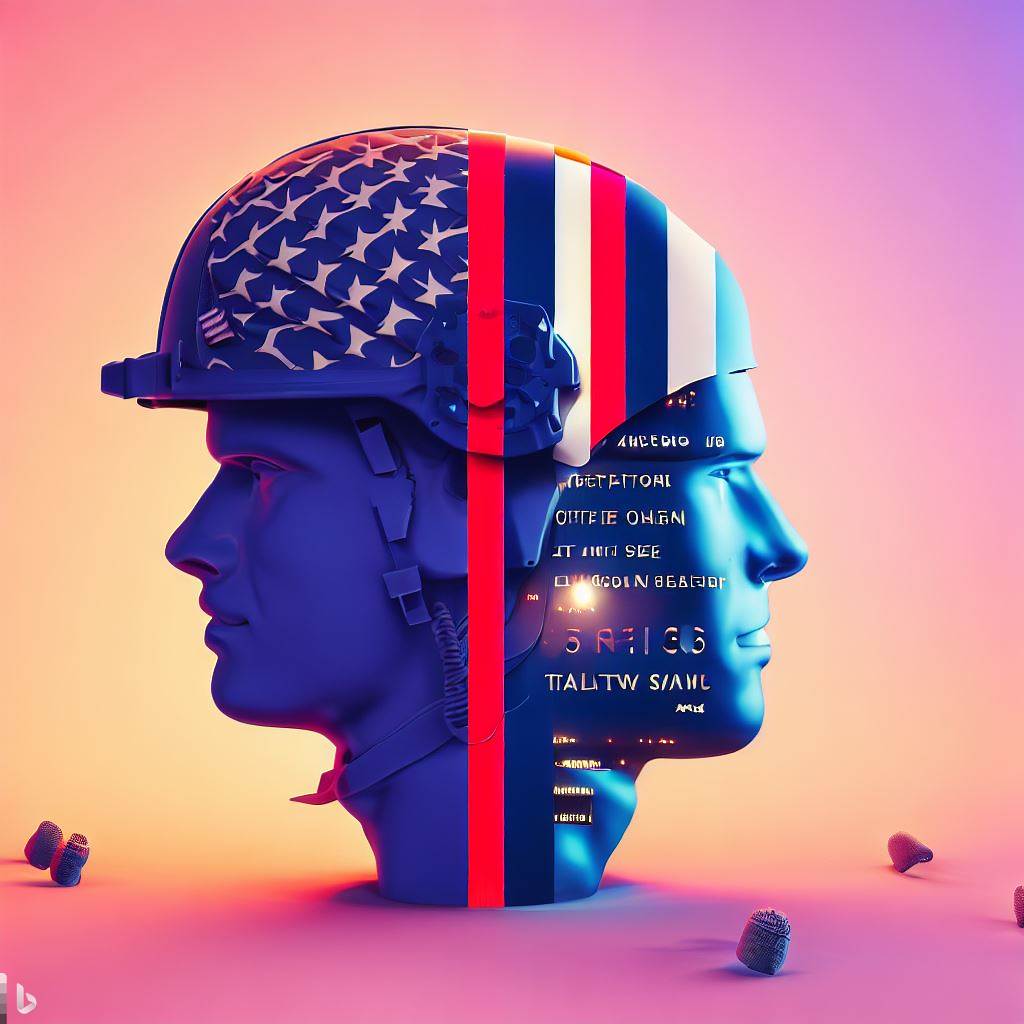Introduction
Coding Games Unveiled
Coding games are immersive digital playgrounds where creativity meets technology, empowering you to craft interactive experiences.
The Advantages Await
- Skill Enhancement: Building your coding game in Unity sharpens your coding skills.
- Unleash Creativity: Express yourself through unique gameplay and storylines.
- Monetization: Turn your passion into profit through in-game purchases and ads.
- Portfolio Boost: Impress employers and clients with a standout project.
- Community Building: Connect with fellow developers and gamers.
Embark on a journey that not only fuels your passion but also hones your programming prowess.
Dive into the world of coding games in Unity and unlock endless possibilities.
Understanding Unity and Coding Basics
What Unity is and its relevance for game development
Unity is a powerful and widely-used game development engine that allows creators to build interactive and immersive experiences.
It provides a flexible and intuitive interface to develop games for various platforms such as PC, consoles, mobile, and augmented reality devices.
One of the key strengths of Unity is its cross-platform compatibility, enabling developers to create games that can run on multiple devices without significant modifications.
This makes Unity an ideal choice for game development, as it eliminates the need to write separate codebases for different platforms.
Additionally, Unity offers a wide range of features and tools that streamline the game development process.
From physics simulations to animation systems, Unity provides developers with a comprehensive set of tools to bring their game ideas to life.
It also supports a wide array of programming languages, including C#, JavaScript, and Boo, offering flexibility for developers with different coding backgrounds.
Furthermore, Unity has a vibrant and supportive community, which means developers can easily find resources, tutorials, and forums to help them solve problems and learn new techniques.
This community-driven nature of Unity fosters collaboration and knowledge exchange, making it easier for aspiring developers to get started and experienced developers to take their skills to the next level.
Unity is a versatile game development engine that empowers developers to create engaging and interactive experiences across multiple platforms.
Its cross-platform compatibility, extensive toolset, and supportive community make Unity a robust choice for both beginner and experienced game developers.
The importance of understanding coding basics for building a game
Understanding coding basics is crucial for building a game because it forms the foundation of game development.
Coding allows developers to bring their ideas to life by defining the behavior, interactions, and logic of the game.
Through coding, developers can control the movement of characters, implement game mechanics, create artificial intelligence systems, manage input and control schemes, and much more.
Without a solid understanding of coding, it becomes challenging to translate game concepts into functional and enjoyable experiences.
Furthermore, coding proficiency enables developers to optimize performance and efficiency in their games.
By writing clean and efficient code, developers can ensure that their games run smoothly and efficiently, maximizing player enjoyment.
Additionally, coding knowledge allows developers to identify and fix bugs, enhancing the overall quality and stability of the game.
Moreover, understanding coding basics opens up opportunities for customization and creativity.
It allows developers to experiment with new features, create unique gameplay mechanics, and develop innovative solutions to design challenges.
This flexibility and creative freedom are what make each game unique and distinguishable.
Additionally, coding skills are highly transferable and valuable in the broader tech industry.
Game development requires problem-solving, logical thinking, and algorithmic design skills in demand in software development, data science, and automation.
Understanding coding basics is essential for building a game as it provides the necessary skills to transform ideas into interactive experiences.
It enables developers to control and customize game behavior, optimize performance, and unleash their creativity.
Moreover, coding proficiency opens doors to other tech-related career opportunities beyond game development.
Setting Up Unity
Guide readers on downloading and installing Unity
Unity is a powerful game development engine that allows you to create your own coding games.
To get started, you need to download and install Unity on your computer.
Here’s a step-by-step guide to help you through the process:
- Go to the official Unity website (www.unity.com) and navigate to the “Downloads” section.
- Choose the version of Unity that is suitable for your operating system. Unity supports Windows, macOS, and Linux.
- Click on the download button to start the download. The file size might be large, so make sure you have a stable internet connection.
- Once the download is complete, open the installer. Follow the on-screen instructions to install Unity on your computer.
- During the installation process, Unity might prompt you to select the components you want to install.
It is recommended to install all the components to have access to all the features and tools Unity provides. - After the installation is complete, launch Unity by double-clicking on the Unity icon on your desktop or opening it from the start menu.
- Unity will ask you to sign in or create a new Unity account. It is highly recommended to create an account as it will allow you to access additional features and resources.
- Once you’ve signed in, you will be greeted with the Unity Hub. This is a centralized hub that allows you to manage your Unity projects and access the Unity Store and Unity Learn.
- From the Unity Hub, you can create a new project or open an existing one. To create a new project, click on the “New” button and give your project a name and location on your computer.
- Once your project is created, Unity will open the Unity Editor, which is where you will build and design your coding game.
Walkthrough the Unity interface and its key features
Now that you have Unity installed and your project created, let’s take a walkthrough of the Unity interface and explore its key features.
Tech Consulting Tailored to Your Coding Journey
Get expert guidance in coding with a personalized consultation. Receive unique, actionable insights delivered in 1-3 business days.
Get Started- Scene View: This is where you can design and build your 3D or 2D game levels. You can navigate and manipulate objects in the scene here.
- Game View: This view allows you to see how your game will look and behave when played. It gives you a real-time preview of your game.
- Hierarchy: The Hierarchy panel displays all the objects in your current scene. You can organize and manipulate the objects hierarchically.
- Project: The Project panel contains all the assets and resources for your project. You can import and manage your assets here.
- Inspector: The Inspector panel provides detailed information about the currently selected object in the scene or project. You can modify its properties and components here.
- Toolbar: The Toolbar provides quick access to common actions and tools such as saving, playing the game, and navigating the Unity interface.
- Play Mode: Unity has a play mode feature that allows you to play and test your game within the Unity Editor. This helps you debug and iterate on your game quickly.
- Scripting: Unity supports various scripting languages such as C# and JavaScript. You can write your game logic and behaviors using scripts.
- Asset Store: The Asset Store is a marketplace where you can find and acquire assets, scripts, and plugins to enhance your game development process.
- Unity Learn: Unity Learn is a platform that provides tutorials, courses, and resources to help you learn Unity and improve your game development skills.
By familiarizing yourself with the Unity interface and its key features, you’ll be ready to start building your own simple coding game in Unity.
Stay tuned for the next section, where we’ll dive into the game development process using Unity!
Planning the Coding Game
The purpose and target audience of the game
When planning a coding game, it is crucial to determine its purpose and target audience.
- Purpose: Clearly define what the game aims to achieve. Is it to teach coding concepts, enhance problem-solving skills, or simply entertain?
- Target Audience: Identify the specific group the game is intended for. Will it target beginners, intermediate or advanced coders?
The game mechanics and interaction elements that will be included
The next step involves discussing the game mechanics and interaction elements that will make up the coding game.
- Game Mechanics: Define how the game will function from a technical standpoint. Will it involve solving puzzles, completing challenges, or writing code?
- Interaction Elements: Determine the features that players will use to interact with the game. Will it include a drag-and-drop interface, a command-line interface, or both?
- Level Design: Plan out the game’s level progression and difficulty curve. Start with simple concepts and gradually introduce more complex challenges.
- Visuals and Audio: Decide on the game’s visual style and audio elements. Consider using engaging graphics and sound effects that enhance the learning experience.
- Feedback System: Implement a feedback system that provides players with constructive feedback to improve their coding skills.
- Game Progression and Rewards: Design a system that rewards players’ progress, unlocking new levels, characters, or features as they advance in the game.
- Error Handling: Consider implementing error handling mechanisms to guide players when they make mistakes in their code.
- Documentation and Help: Plan on providing players with in-game documentation or tutorials that explain coding concepts and guide them through the game’s mechanics.
- Testing: Allocate time for testing to ensure that the game is playable, bug-free, and offers a satisfactory learning experience.
- Iteration and Improvement: Prepare to gather feedback from users and iterate on the game to enhance its features and address any issues that arise.
When developing a coding game in Unity, careful planning is essential.
By defining the purpose and target audience, and discussing game mechanics and interaction elements, you can create an engaging and effective coding learning experience.
Creating the Game Environment
To design and set up the game scene, follow these steps
- Open Unity and create a new project.
- Choose a suitable theme for your game and create a blank scene.
- Add a background image or color to your scene by importing the desired assets.
- Position the camera in a way that provides a suitable view of the game scene.
The process of adding necessary assets and objects to the scene involves the following
- Import 2D or 3D assets, including characters, objects, and props, into Unity.
- Create a game object for each asset and specify its position, rotation, and scale.
- Add scripts to game objects for controlling their behavior and interactions in the game.
- Arrange the game objects in the scene, setting up the layout and positions as desired.
- Ensure proper collision detection by adding colliders to the necessary game objects.
- Implement lighting in the scene to enhance its visual appeal and set the atmosphere.
- Fine-tune the properties of the assets and objects, such as materials and textures, to achieve the desired look.
- Test the scene in Unity’s Play mode to verify that the assets and objects interact correctly.
By following these steps, you can successfully design and set up the game environment in Unity.
Read: Getting Started with JavaScript: Best Coding Games
Coding the Gameplay
Introduce the scripting language used in Unity (e.g., C#)
- C# is the scripting language widely used in Unity for developing interactive gameplay.
- It is an object-oriented language that allows for efficient and structured coding.
- With C#, you can access Unity’s features and create complex game mechanics.
Step-by-step coding instructions for game mechanics, such as character movements or obstacles
- Start by creating a new script in Unity and name it according to the desired game mechanic.
- Open the script in a code editor, such as Visual Studio, and begin coding the desired functionality.
- For character movements, create variables to represent the character’s position and define its
movement speed. - Use input functions like GetKeyDown or GetAxis to detect user input, enabling character movements.
- Update the character’s position by applying the movement speed and multiplying it by Time.deltaTime for smooth movement.
- To add obstacles, create necessary variables like obstacle position, size, or behavior.
- Use collision detection methods like OnTriggerEnter or OnCollisionEnter to detect interactions between the character and obstacles.
- Implement code to handle obstacle logic, such as causing damage to the character or triggering game events.
- Continuously test and debug the gameplay mechanics, making adjustments as necessary.
- Additionally, consider implementing UI elements like score counters or life indicators using Unity’s UI system.
- Utilize Unity’s documentation and online resources for additional guidance and examples.
- Remember to comment your code for better readability and future reference.
By following these step-by-step coding instructions, you can create various game mechanics within your Unity project.
C# provides the necessary tools for implementing character movements, obstacles, and much more.
As you gain more experience, you can delve into more complex gameplay features and unleash your creativity in game development.

Implementing Game Logic and Rules
Importance of Game Logic and Rules
- Game logic and rules are vital as they define how a game behaves and what actions are allowed.
- They ensure consistency, balance, fairness, and challenge in the gameplay experience.
- Proper implementation of game logic and rules enhances player engagement and enjoyment.
Applying Logic to the Game using Scripts
- Understanding the game’s mechanics: Analyze the gameplay elements, interactions, and desired outcomes.
- Designing the rule structure: Identify the core rules that govern the game and determine their relationships.
- Translating rules into scripts: Write code that represents the logic and conditions for implementing the game rules.
- Modularity and reusability: Organize the scripts into functions and reusable components for better code maintenance.
- Collision detection and reactions: Utilize collision-based events and triggers to invoke specific game logic when objects interact.
- Managing game states: Implement states such as start screen, gameplay, pause, game over, and victory conditions.
- Event handling: Use event-driven programming to respond to user input or game events and update the game accordingly.
- Error handling and debugging: Implement error-checking mechanisms and analyze code behavior to resolve any bugs or issues.
- Playtesting and iteration: Test the game repeatedly, gather feedback, and refine the logic to improve gameplay experience.
- Balancing and adjusting rules: Fine-tune the game rules to ensure fair challenges, progression, and player satisfaction.
By following these steps, you can effectively implement game logic and rules in your own coding game developed in Unity.
Now that you’ve learned the importance of game logic and rules and how to apply them to your Unity game using scripts, you are ready to create an immersive and engaging gameplay experience.
Remember, game logic and rules are the backbone of any game, and their proper implementation is crucial for creating an enjoyable player experience.
Make sure to plan, design, and refine your game logic iteratively, considering factors like balance, fairness, and challenges.
In the next section, we will explore the process of designing and creating game assets, including graphics, sounds, and animations, to add visual appeal to your coding game.
Read: Why Coding Games Are The Best Way To Learn Java
Adding Visual and Audio Effects
The significance of visual and audio effects in enhancing the gaming experience
- Immersion: Visual and audio effects bring the game world to life, making players feel fully immersed in the experience.
- Feedback: These effects provide feedback to players, helping them understand their actions and the consequences within the game.
- Engagement: Visual and audio effects captivate players’ attention, making the game more engaging and enjoyable.
- Atmosphere: By creating a specific atmosphere through effects, games can evoke different emotions and enhance the overall mood.
How to incorporate visual and audio effects in the game
Visual Effects
- Particle Systems: Use Unity’s particle system to create various effects like explosions, fire, smoke, or magical spells.
- Lighting: Adjust the lighting settings to set the mood and create dynamic shadows in the game.
- Camera Effects: Apply camera effects like depth of field, motion blur, or vignetting to add cinematic flair.
- Animations: Utilize animations to enhance the movement of characters and objects, making them more realistic.
Audio Effects
- Sound Effects: Use appropriate sound effects for actions like shooting, jumping, or interacting with objects.
- Background Music: Choose suitable background music that fits the game’s theme and enhances the overall experience.
- Voice Overs: Include voice overs for characters or narrations, adding depth to the storytelling.
- Spatial Audio: Utilize spatial audio to create a more immersive environment, where sounds come from specific directions.
By using the above techniques, you can elevate your game’s visual and audio effects, providing players with a memorable experience.
These effects will bring your game world to life, engage players, and create an immersive atmosphere.
Remember, while adding visual and audio effects is essential, it’s crucial to strike a balance.
Avoid overwhelming players with excessive effects that distract from the gameplay itself.
The goal is to enhance the gaming experience, not detract from it.
Build Your Vision, Perfectly Tailored
Get a custom-built website or application that matches your vision and needs. Stand out from the crowd with a solution designed just for you—professional, scalable, and seamless.
Get StartedVisual and audio effects play a vital role in enhancing the overall gaming experience by immersing players, providing feedback, increasing engagement, and setting the atmosphere.
Through various techniques like particle systems, lighting, sound effects, and music, you can create a captivating and immersive game world.
Striking a balance is key, ensuring that these effects complement gameplay rather than overpowering it.
So, unleash your creativity and leverage the power of visual and audio effects to create a memorable coding game in Unity.
Read: A Deep Dive: How Coding Wars Shape Tech Industry Hiring
Testing and Debugging
The Importance of Testing and Debugging in Game Development
Testing and debugging are crucial in game development as they ensure the quality and functionality of the game.
Without proper testing and debugging, the game may have several issues that would affect the player’s experience.
Tips and Techniques on Testing and Identifying Issues
- Create a Testing Plan: Develop a comprehensive testing plan that outlines the specific areas and features to be tested.
- Test Early and Test Often: Begin testing as soon as possible and continue throughout the development process to catch issues early.
- Use Different Testing Methods: Employ a variety of testing methods such as functional testing, performance testing, and compatibility testing.
- Device and Platform Testing: Test the game on different devices and platforms to ensure compatibility and identify any device-specific issues.
- Utilize Beta Testing: Involve players outside of the development team to conduct beta testing and gather feedback on gameplay and any potential issues.
- Debugging Tools: Take advantage of debugging tools provided by the game development platform, such as Unity, to identify and fix issues.
- Test Different Scenarios: Test the game in various scenarios to uncover any unforeseen issues that may arise during gameplay.
- Collaborate with Others: Seek feedback and work with other developers or experienced testers to identify and resolve issues.
- Error Logging: Implement error logging to track and record any errors or issues encountered during testing for easier troubleshooting.
- Regression Testing: Regularly perform regression testing to ensure that fixes and changes do not create new issues.
- User Experience Testing: Test the game from a user’s perspective to ensure a smooth and enjoyable gameplay experience.
- Performance Optimization: Identify performance bottlenecks and optimize the game’s performance to avoid performance-related issues.
- Documentation: Keep track of all identified issues and their resolutions in a centralized documentation system for reference.
- Playtesting: Regularly playtest the game to experience it as a player would and identify any issues or improvements.
- Continuous Improvement: Learn from previous testing experiences and incorporate lessons learned into future development cycles.
By prioritizing testing and debugging throughout the game development process, developers can ensure a high-quality game that meets players’ expectations.
Read: Coders Assemble! Top Annual Coding Wars Events in the USA
Publishing Your Game
Processes of finalizing the game for distribution
- Test the game thoroughly to ensure it is bug-free and provides a smooth gameplay experience.
- Optimize the game’s performance by identifying and fixing any issues that may affect its speed or responsiveness.
- Incorporate any necessary improvements or enhancements based on feedback received during testing.
- Polish the game’s graphics, sound effects, and music to create an immersive and engaging experience.
- Add appropriate documentation and instructions to guide players on how to navigate and play the game.
- Consider implementing additional features, such as leaderboards or achievements, to enhance the game’s replayability.
Steps for publishing the game on relevant platforms
- Research the different platforms available for game distribution, such as app stores and gaming marketplaces.
- Choose the platform(s) that align with your target audience and game’s requirements.
- Create developer accounts on the chosen platforms and familiarize yourself with their submission guidelines and requirements.
- Build a release package for your game, including all necessary files and assets.
- Follow the platform’s guidelines to prepare your game’s store page, providing attractive screenshots, a compelling description, and relevant keywords.
- Upload your game package to the platform, ensuring that it meets all technical and content requirements.
- Set the appropriate pricing, availability, and any other customization options provided by the platform.
- Test the game again after uploading to ensure it functions correctly on the platform.
- Promote your game through social media, game forums, and other channels to generate awareness and attract players.
- Interact with players by responding to their reviews, addressing their concerns, and providing updates and bug fixes when needed.
- Monitor the game’s performance and gather feedback to further improve and optimize it over time.
- Consider exploring additional distribution channels, such as partnerships with other developers, to reach a wider audience.
With these steps, you can finalize your game for distribution and publish it on relevant platforms to share your creation with players worldwide.
Remember to continuously engage with your audience and improve your game to ensure its sustained success. Good luck!
Explore Further: Coding Memes That Make Even Non-Coders Laugh
Conclusion
This blog post has discussed the process of building a simple coding game in Unity.
We began by understanding the basics of game development and the tools needed.
We then moved on to creating the game logic, player controls, and win/lose conditions.
Additionally, we explored the importance of user interface design and game testing for a better player experience.
We learned how to add graphics and audio to enhance our game.
Finally, we discussed the importance of ongoing learning and practice to improve our coding skills.
Now that we have covered the key points, it is time for you, as the reader, to start building your own coding games in Unity.
Don’t hesitate to dive into the world of game development and unleash your creativity.
By following the step-by-step process explained in this blog post, you can create your first simple coding game and gain valuable experience in game development.
Remember, practice makes perfect, so don’t be discouraged if your first attempt is not flawless.
The more you practice and experiment with different game mechanics, the better you will become at creating captivating coding games.
So, go ahead and start building your own coding games in Unity today and see where your imagination takes you.
Good luck on your game development journey!




